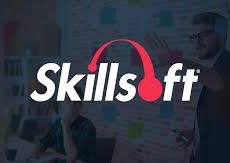
Interviews
Jeff Renard on the Vermont Virtual Learning Cooperative
By Cait Etherington
February 16, 2017
Unlike many K-12 virtual schools, in Vermont, the push to expand virtual K-12 education is being driven by public rather than charter or independent schools. Indeed, in Vermont, where charter schools are prohibited by law, public schools and public educators have taken a leading role in expanding online education and are working with outside organizations to develop best practices to ensure that future eLearning initiatives at the K-12 meet and exceed the learning outcomes of any in-person classroom. eLearning Inside News talked to VTVLC director Jeff Renard on the Vermont Virtual Learning Cooperative and its current mandate to learn more about Vermont’s unique approach to promoting K-12 eLearning and how it is already bringing online learning to thousands of public school students and home schoolers statewide at no cost to most parents and students.
The History of the VTVLC
Cait Etherington: When and why was the Vermont Virtual Learning Cooperative established?
Jeff Renard: The Vermont Virtual Learning Cooperative was created by an RFP from the Vermont Agency of Education using ARRA/Title II D funds in 2009. The purpose of the grant was to create a statewide organization to manage and lead Vermont’s efforts in K-12 distance learning.
CE: How many students are currently enrolled on a full-time and part-time basis?
JR: VTVLC currently serves approximately 1200 unique students with over 2500 course enrollments. VTVLC is a supplemental program, and does not issue diplomas. Vermont does not have any charter schools (prohibited by statute). VTVLC is part of the public education system and supports any/all Vermont schools to offer online courses as part of the cooperative exchange (partner) program. Therefore, some students that are considered “full-time” are still enrolled at their local schools and not officially at VTVLC.
CE: Are home schoolers part of your population and was this population one of the driving forces behind the formation of the cooperative?
JR: VTVLC does serve the home study population in Vermont. Home study students may request support from their local school to access VTVLC courses as part of their home study plan (up to 40%) and still be considered home study students.
VTVLC’s Partnerships with Public Schools
CE: In most states, virtual high schools are either charter schools or independent schools. What is VTVLC’s status? I know you have “partner” and “non-partner” schools. Are these partner schools part of the public education system in Vermont. Also, who pays and who doesn’t pay and what is the average enrollment fee for those who have to pay?
JR: VTVLC is a cooperative partnership, meaning that any/all Vermont school may join and offer online courses by providing a teacher that, as part of their regular teaching assignment, facilitates an online course. In return, the partner school may enroll up to 50 students in any of the Fall/Spring offerings in the partnership. We encourage school that join to offer low/under-enrolled courses in order to open those unused seats to other students around the state, thereby maximizing their resources. The current cost for partnership is $4,500 per year for a partner school’s first teacher. Additional teachers from that school can be added for $1,500 and earn an additional 50 seats. In addition to the Fall and Spring enrollments covered under the partnership, VTVLC also offers On-Demand enrollments. This program allows students to select their own start and end dates for courses, and they can take up to 6 months to complete a .5 credit enrollment. VTVLC uses adjunct faculty to facilitate these courses and hires them directly. Partner schools enroll their students at cost for On-Demand, and non-partner schools pay a slightly higher course fee. Non-partner schools, (and out of state schools) may enroll students in any program offered by VTVLC. Almost all schools cover the course fees/partner costs for their students to enroll in courses. Current pricing is detailed on our site.
CE: So VRVLC does hire teachers but many of the teachers are in fact teachers located in partner schools, correct?

JR: Partner schools recommend their online teachers, but VTVLC works with the school(s) to ensure only the highest quality faculty are facilitating online courses. The Fall/Spring programs are all facilitated by teachers as part of their regular teaching assignment at their local school. This eliminates having to have a complicated statewide master agreement for teachers. Each district negotiates its own agreement with the teacher association locally. VTVLC does hire adjunct faculty and pays per enrollment with the teachers setting their own minimum and maximum enrollments they are willing to work with for On-Demand enrollments. In addition to the teachers content area endorsements for licensing, Vermont faculty are also required to have an Online Teaching Specialist Endorsement (OTS) to facilitate coursework with students from a distance. The knowledge and performance standards for this endorsement ensure that teachers are prepared for the rigors of online teaching. VTVLC, in collaboration with the Marlboro Graduate Center for Professional Studies, offers a 10 credit graduate certificate in online teaching that meets the requirements of the OTS endorsement. We oversee the program and leverage experienced online educators to facilitate these courses as part of the Northeast Online Teaching Institute (NEOTI). As a result, we have can establish very high standards for Vermont faculty that will be entering into online teaching status. In addition, we offer these online educator programs to teachers regardless of where they are located.
Obstacles and Future Directions for K-12 Virtual Education
CE: To date, eLearning has taken off in higher education at a much faster pace than it has at the K-12 level. What needs to happen to ensure that eLearning can take root at the K-12 level too? Are there specific policy barriers or technological barriers that we still need to overcome?
JR: Funding is still a major obstacle at the K-12 level as states struggle with funding public education. In most states, the impact of the funds following students to a virtual school (public or private charter) will continue to be a limiting factor to access. We believe that our system in Vermont allows schools to continue with the traditional funding mechanisms and, through our cooperative exchange program, provide maximum flexibility and access to online programs. However, statewide recognition of the virtual program still varies state by state.
CE: Finally, is VTVLC hoping to expand? What are your current next steps?
JR: Vermont is now a competency based education state. We have seen an increase in both school and student needs to find flexible alternative opportunities to meeting proficiencies to meet graduation requirements. In particular, our On-Demand program has grown considerably. I feel that, in part, it is because students can leverage summer terms to meet their graduation requirements. This allows them to meet their requirements early, or in may cases, expand access to opportunities to programs like Career Technical Education (CTE) and dual enrollment offerings by leveraging the flexibility that online learning provides.









No Comments